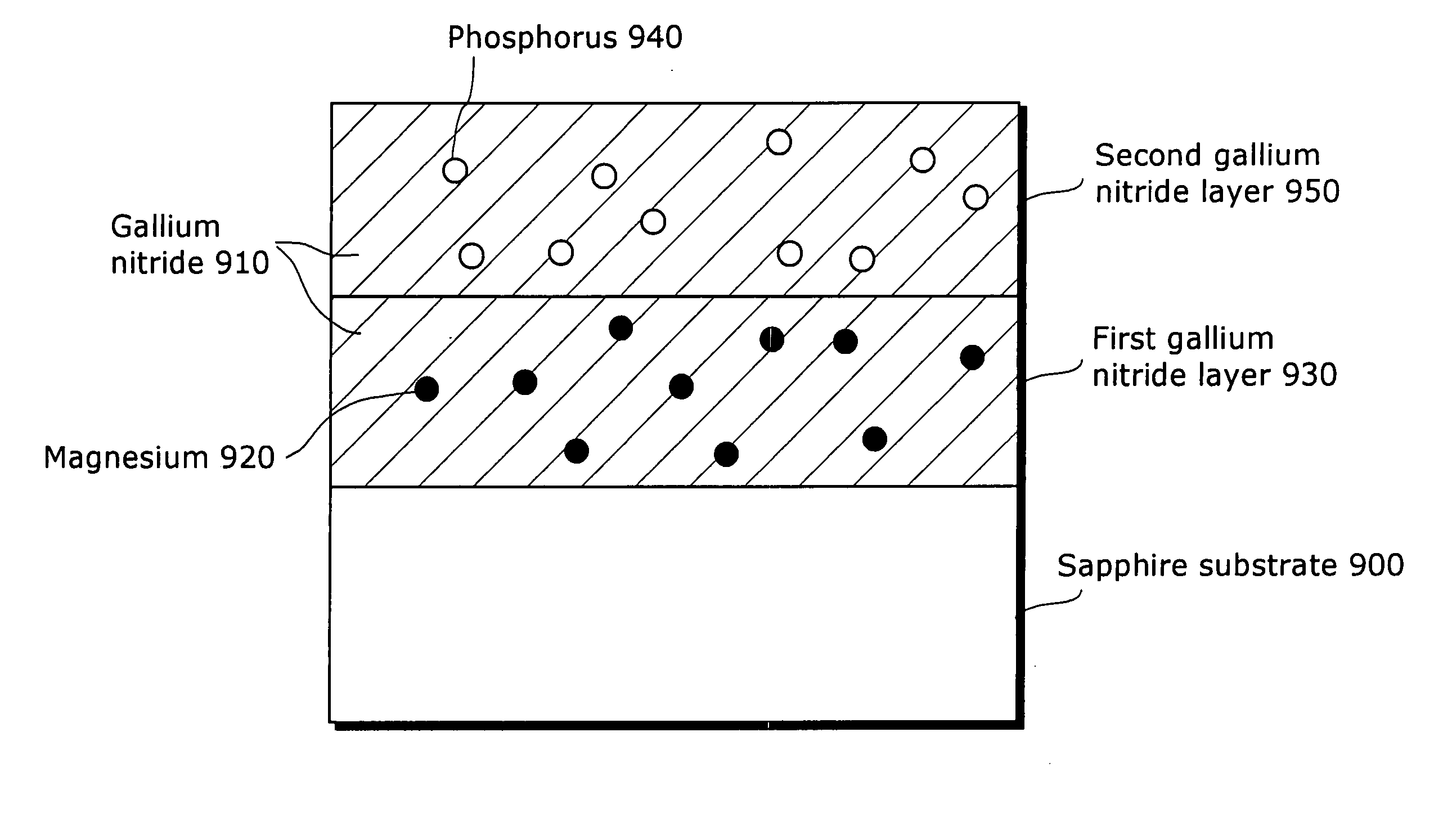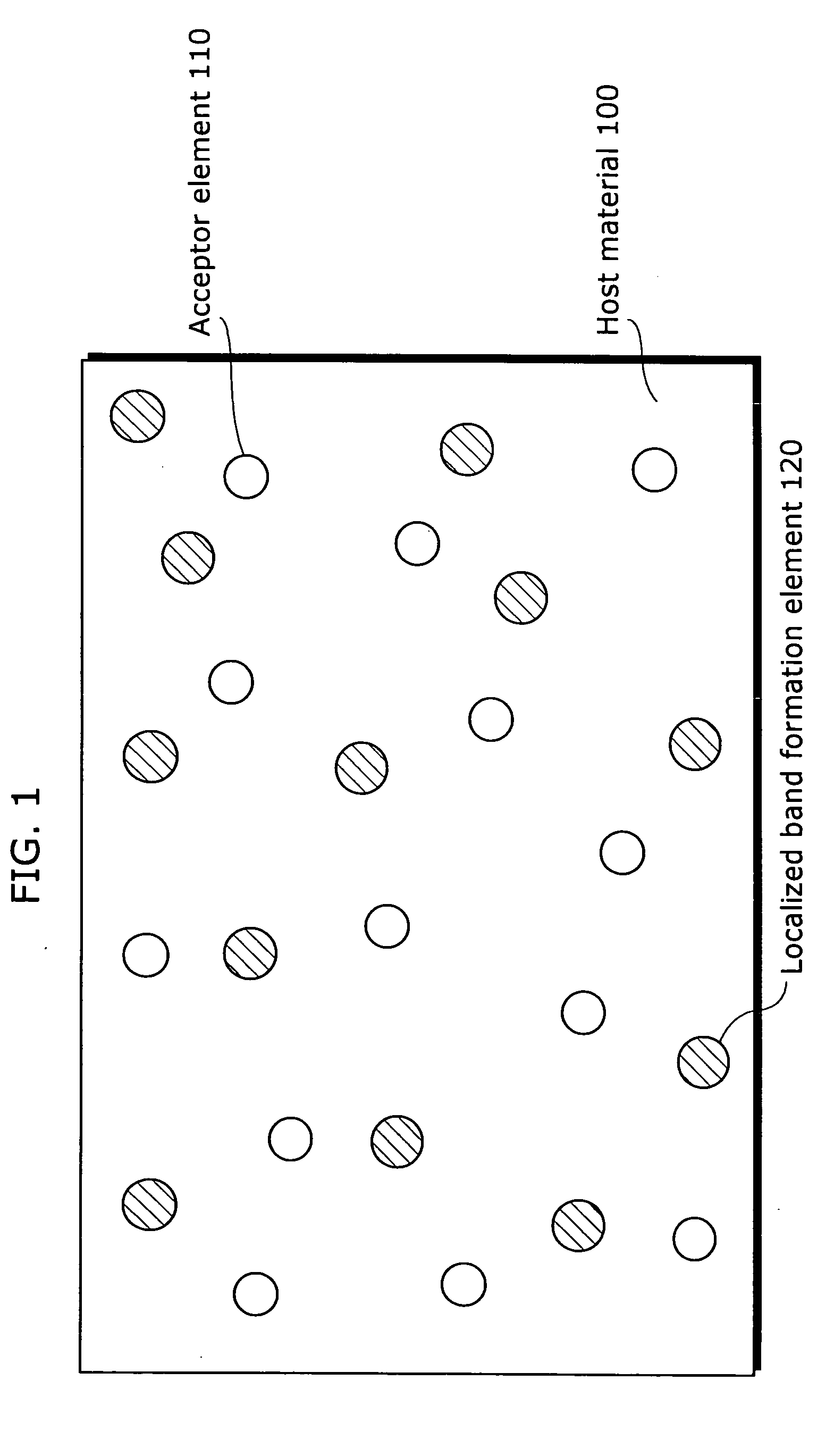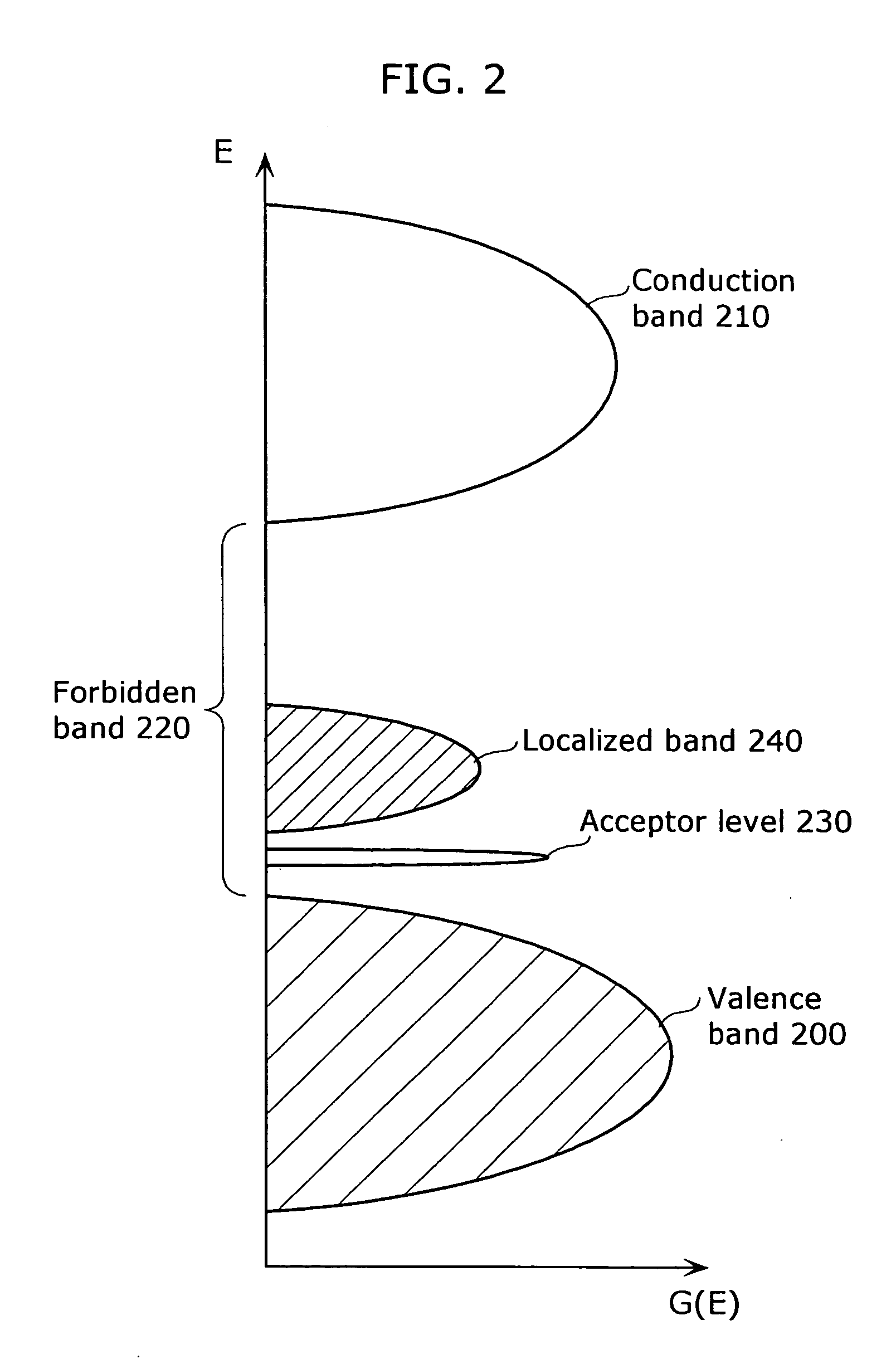P-type semiconductor and semiconductor metero material and manufacturing methods thereof
a technology of metero materials and semiconductors, applied in the field of p-type semiconductors, can solve the problems of low resistance of p-type semiconductors, inability to obtain p-type nitride semiconductors with high concentration of hole carriers, and achieve low resistance, reduce the operation voltage of semiconductor devices, and reduce the effect of resistan
- Summary
- Abstract
- Description
- Claims
- Application Information
AI Technical Summary
Benefits of technology
Problems solved by technology
Method used
Image
Examples
first embodiment
[0075] (The First Embodiment)
[0076] FIG. 1 is a diagram showing conceptually the structure of the p-type semiconductor according to the present embodiment.
[0077] The p-type semiconductor aims to realize a p-type semiconductor with low resistance and is composed of host material 100, an acceptor element 110 which is doped to the host material 100, and a localized band formation element 120 which is doped to the host material 100.
[0078] Here, the host material 100 is a simple semiconductor or a compound semiconductor. For example, a simple semiconductor is represented by a silicon semiconductor, a germanium semiconductor, and a diamond semiconductor; a compound semiconductor is represented by a nitride semiconductor and an oxide semiconductor. By the way, a nitride semiconductor is a compound semiconductor including at least one of the Group III elements and at least one Group V elements including nitrogen; an oxide semiconductor is a compound semiconductor including at least one of t...
first example
THE FIRST EXAMPLE
[0093] Next, a concrete example of the p-type semiconductor according to the present embodiment is shown by an example.
[0094] The p-type gallium nitride semiconductor according to the present example is manufactured by using trimethyl gallium (hereinafter, TMG) as the source gas of gallium, using ammonia as the source gas of nitrogen, using biscyclopentagienyl magnesium as the source gas of magnesium, using phosphine as the source gas of phosphorus, and executing epitaxial growth on a sapphire substrate by the MOCVD method. Here, the amount of phosphorus is, for example, about 2 atom %. By the way, in the present example, as a method for manufacturing the p-type gallium nitride semiconductor, the MOCVD method is exemplified. However, it is acceptable that the p-type gallium nitride semiconductor is manufactured by the MBE method, using metal gallium, metal magnesium, indium phosphide and nitrogen source generated by plasma.
[0095] FIG. 3 is a diagram showing a cross ...
second embodiment
[0103] (The Second Embodiment)
[0104] In host material 100 of the p-type semiconductor according to the first embodiment, acceptor element 110 and localized band formation element 120 are doped uniformly. However, even if the part including the acceptor element 110 and the part including the localized band formation element 120 are separated spatially, the same effect in the case of being not separated spatially is obtained. Further, in this case, since it is possible to separate spatially the part transmitting the holes and the part generating the holes and restrain the dispersion of the holes, it is possible to realize the p-type semiconductor with further low resistance. Therefore, in the p-type semiconductor according to the second embodiment, the host material including the acceptor element 110 and the host material including the localized band formation element 120 are separated spatially. Hereinafter, the different points from the first embodiments are mainly explained.
[0105] ...
PUM
| Property | Measurement | Unit |
|---|---|---|
| band gap | aaaaa | aaaaa |
| thermal energy | aaaaa | aaaaa |
| depth | aaaaa | aaaaa |
Abstract
Description
Claims
Application Information
 Login to View More
Login to View More - R&D
- Intellectual Property
- Life Sciences
- Materials
- Tech Scout
- Unparalleled Data Quality
- Higher Quality Content
- 60% Fewer Hallucinations
Browse by: Latest US Patents, China's latest patents, Technical Efficacy Thesaurus, Application Domain, Technology Topic, Popular Technical Reports.
© 2025 PatSnap. All rights reserved.Legal|Privacy policy|Modern Slavery Act Transparency Statement|Sitemap|About US| Contact US: help@patsnap.com



